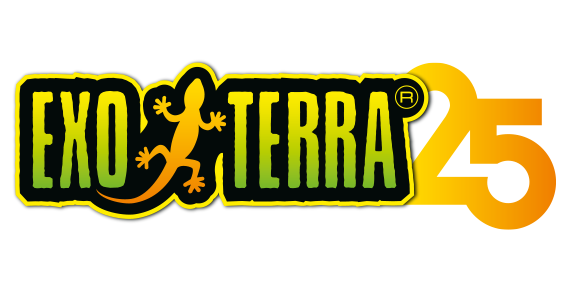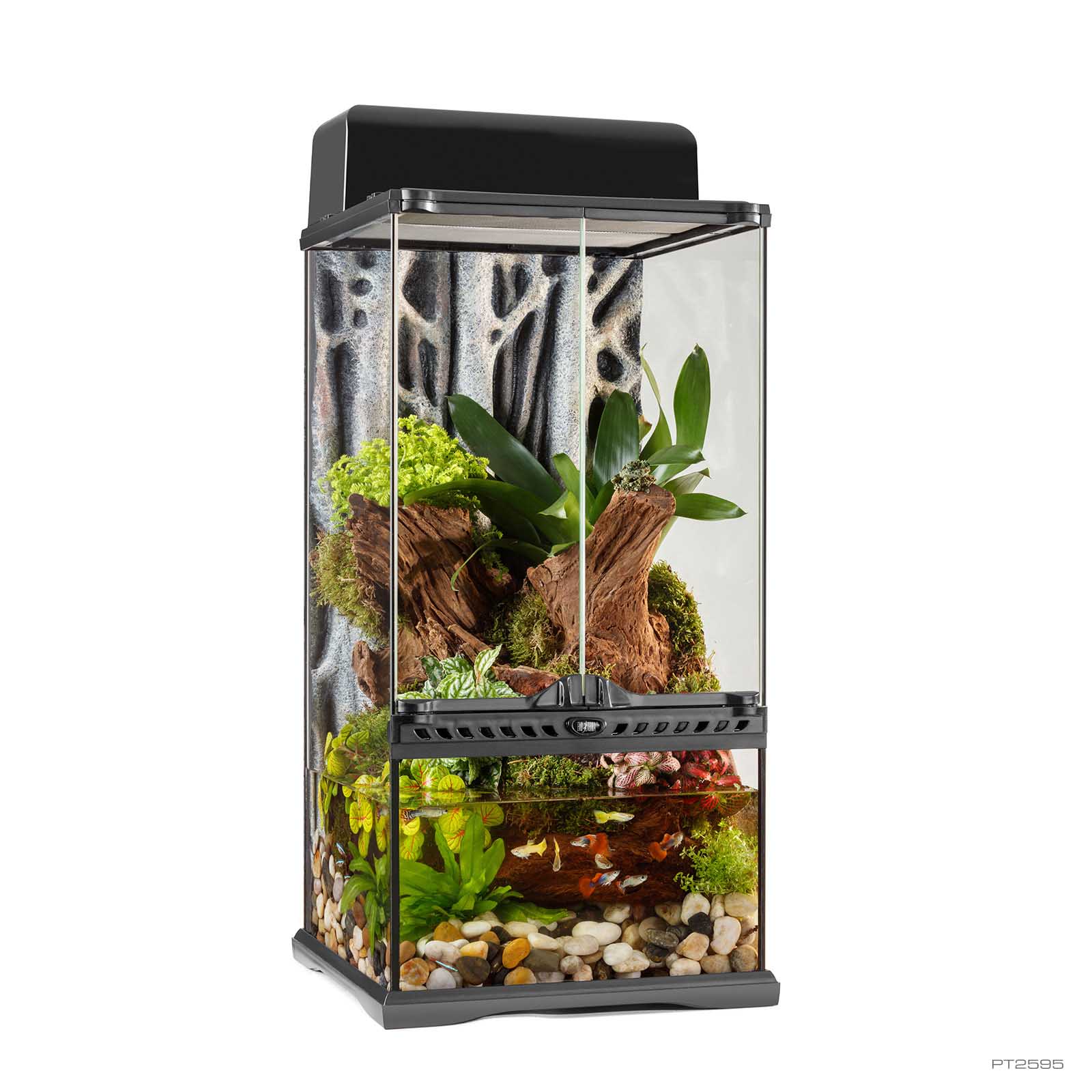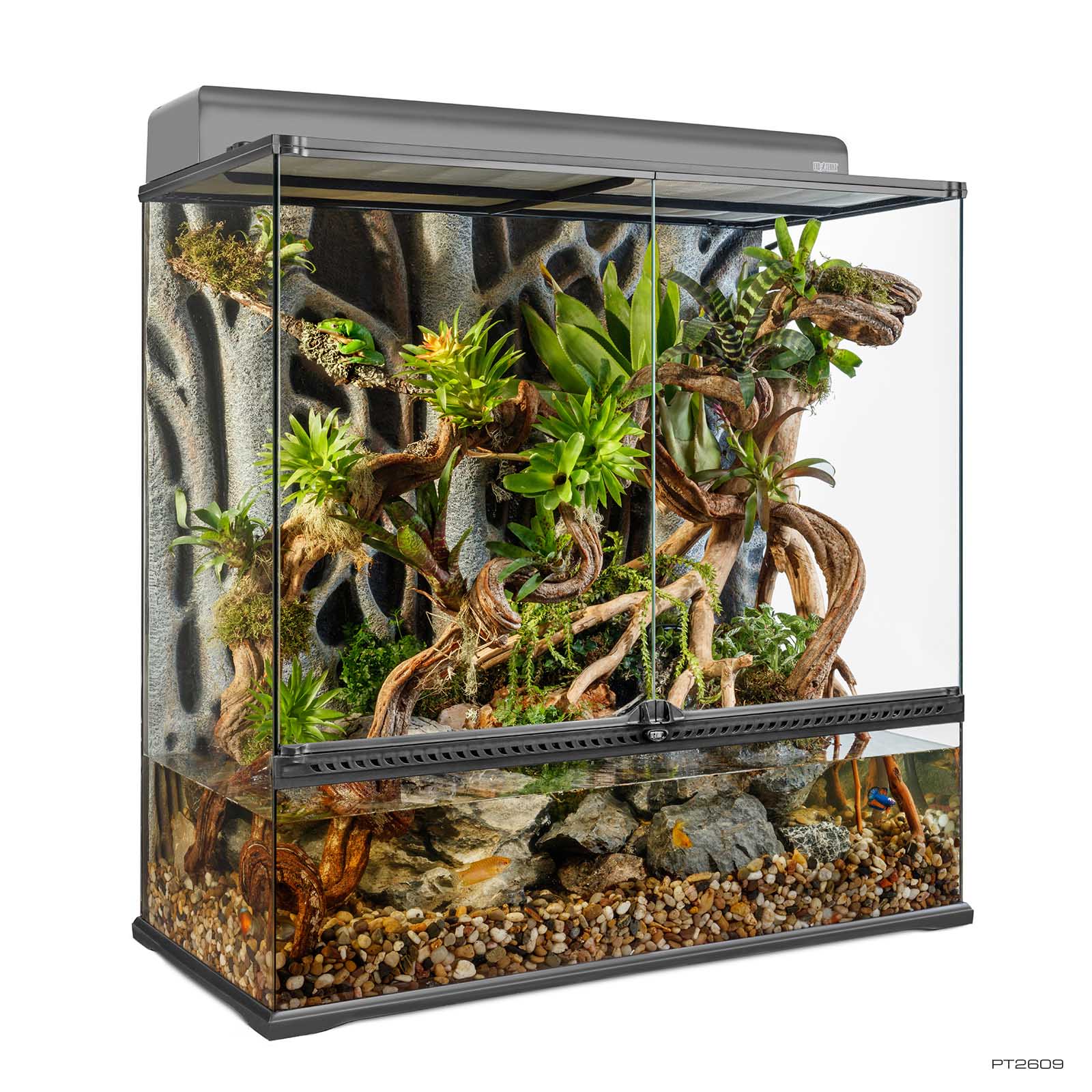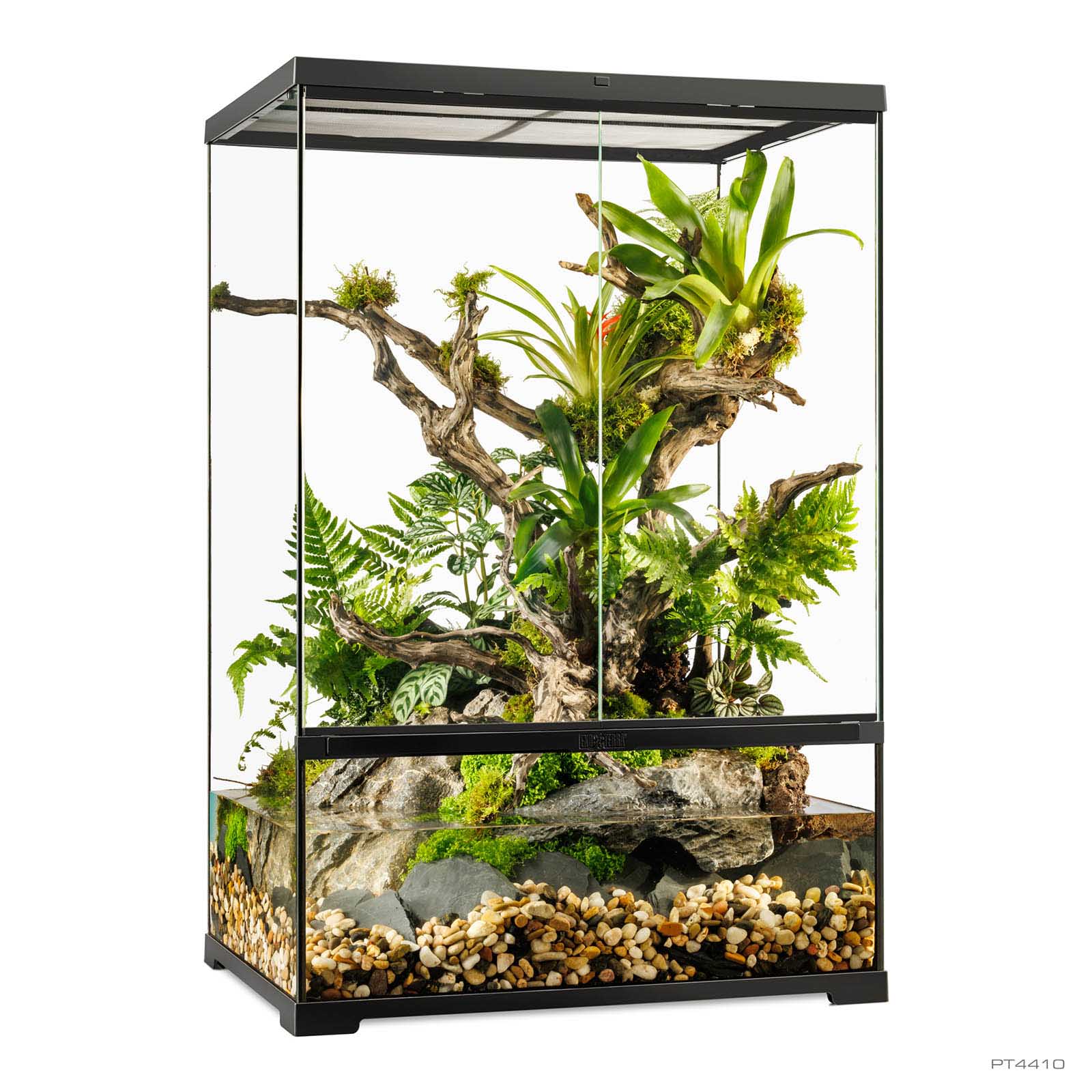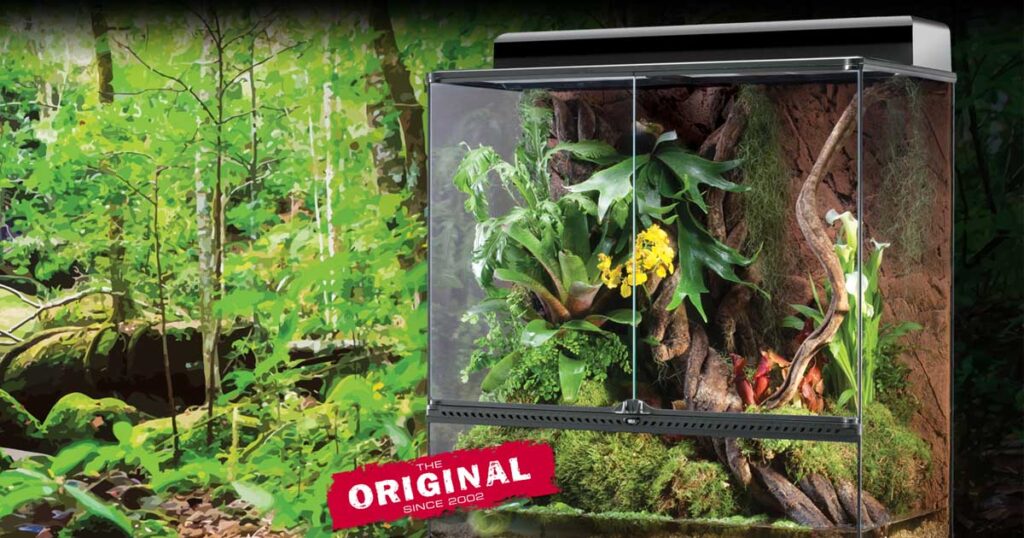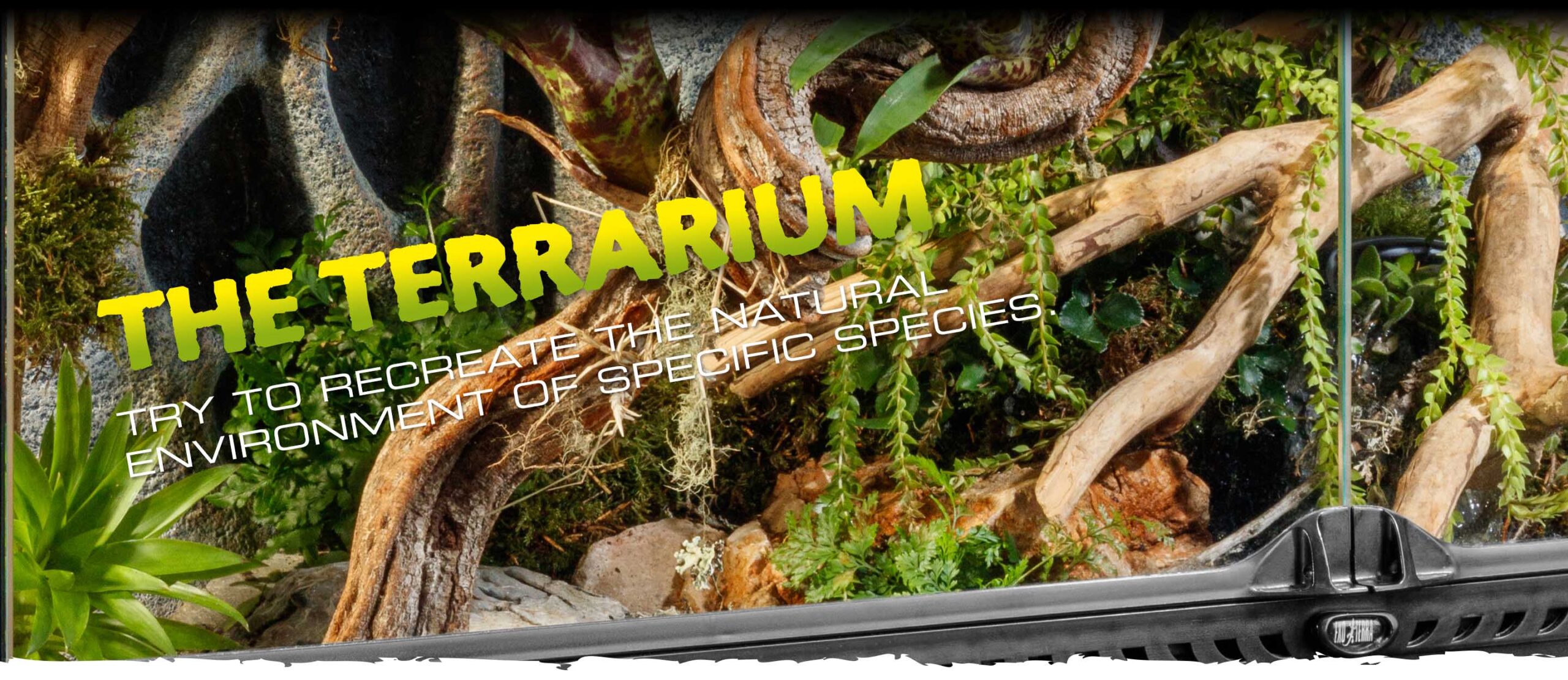
Paludariums
Thomas Merckx
The word paludarium originates from the Latin word “palus” which stands for swamp. Paludariums are semi-aquatic terrarium habitats that replicate a rainforest, swamp or stream and can harbor aquatic as well as terrestrial animal and plant species. A paludarium combines the best of two worlds: an extra deep bottom allows you to incorporate a substantial water part or aquarium section adjacent to the land or terrarium section. A fully equipped and functioning paludarium is basically a small, closed ecosystem.
Water plays a vital role in the life of all animals. It is important for temperature regulation, nutrient
uptake, waste removal, body weight and health. Additionally, many species require the presence of water during a short or longer period of time for certain stages in their life cycle like mating, egg laying, development (larval phase) or even shedding their skin. In the wild, events like seasonal flooding or heavy monsoon rains provide circumstances essential for their survival. If water is not available during a significant period of time, they will either perish or won’t be able to reproduce.
A paludarium is a unique, vivacious ecosystem capturing the essence of three distinct zones – the terrestrial, riparian, and aquatic – each reflecting a different slice of the natural world.
1. Terrestrial Zone: This zone mirrors the land portion of a tropical environment, brimming with a diverse range of invertebrates, reptiles, and amphibians. The area never submerges, featuring an array of plants, trees, bushes, and rocks, creating a playground for varied species.
2. Riparian Zone: The riparian zone, or the riverbank, is the transitional area between land and water, providing a haven for semi-aquatic reptiles and amphibians. Here, life thrives at the crossroads of two diverse habitats.
3. Aquatic Zone: The aquatic zone simulates a waterbody such as a stream, pond, or even a lake, offering a natural home to turtles, aquatic amphibians, fishes, and freshwater shrimps.
Building the Terrestrial and Riparian zones requires using Bio Drain Substrate and a Bio Drain Mesh. These are topped with Exo Terra® Sub Stratum and/or Plantation Soil, further embellished with leaf litter and/or moss, using products like Exo Terra® Equatorial Forest Floor or Forest Moss. The Bio Drain Mesh, made from non-toxic material, separates the Bio Drain Draining Substrate from the decorative top layer, protecting the water from substrate particle contamination while facilitating drainage. The Bio Drain Substrate aids in establishing water sections and a biological filtration system, allowing the clean terrarium water to be circulated through waterfalls, cascades, or dripping plants.
The Terrestrial Zone can be aesthetically enhanced with plants, branches, lianas, rocks, hides, etc. The planting substrate can be a blend of Exo Terra® Sub Stratum and Plantation Soil. The Riparian Zone kept somewhat open, features smaller pebbles, flat wood or stone pieces, providing easy access to the Aquatic Zone. In the Aquatic Zone, Turtle Pebbles, with their ideal size, provide a safe, stable substrate that’s easy to clean.
A fully functioning paludarium will provide a constant source of clean water, which is imperative to keep (semi-)aquatic species. The water part of the paludarium houses all the necessary aquatic equipment: filters, pumps and water heaters. A large part of the aquatic section can consist of a
false bottom supporting the land section. The false bottom can also accommodate and hide the aquatic appliances. Guide the water from the filter pump through your terrarium along a background with live plants and moss or by creating waterfalls that gradually drop the water back into to the water basin. Waterfalls add aesthetic appeal and will help oxygenate and biologically filter the water. Live plants and moss will contribute to the filtration capacities of your terrarium. This type of setup allows you to create an effective filtration system, mirroring the process of natural biological filtration. A fully equipped and functioning paludarium is a small, closed ecosystem. Use Biotize to speed up biological filtration capabilities and have your ecosystem ready immediately.
Perform regular water checks to verify the water quality and the effectiveness of your filter. Partial water changes can help to remove toxic substances or improve overall water quality. Unless really necessary, make sure to never perform entire water changes, as this will also remove beneficial bacteria and organisms.
Which animals thrive in a Paludarium?
Various types of reptiles, amphibians, fish, invertebrates and plants can be housed in a paludarium. Stream dwelling or semi-aquatic species like small turtles, basilisks, water dragons, anoles, newts, salamanders, frogs and small species of fish will thrive in the paludarium. Other
species that can be housed in a paludarium are mudskippers, crabs, shrimp and snails.
The Exo Terra Paludarium is available in 4 sizes (WxDxH):
• PT2595 – Natural Terrarium – Paludarium – Mini X-Tall – 30 x 30 x 60 cm / 12” x 12 ”x 24”
• PT2606 – Natural Terrarium – Paludarium – Small X-Tall – 45 x 45 x 90 cm / 18” x 18” x 36”
• PT2608 – Natural Terrarium – Paludarium – Medium X-Tall – 60 x 45 x 90 cm / 24” x 18” x 36”
• PT2609 – Natural Terrarium – Paludarium – Large X-Tall – 90 x 45 x 90 cm / 36” x 18” x 36”
Thomas Merckx
“Water is the driving force of all nature.”
– Leonardo da Vinci
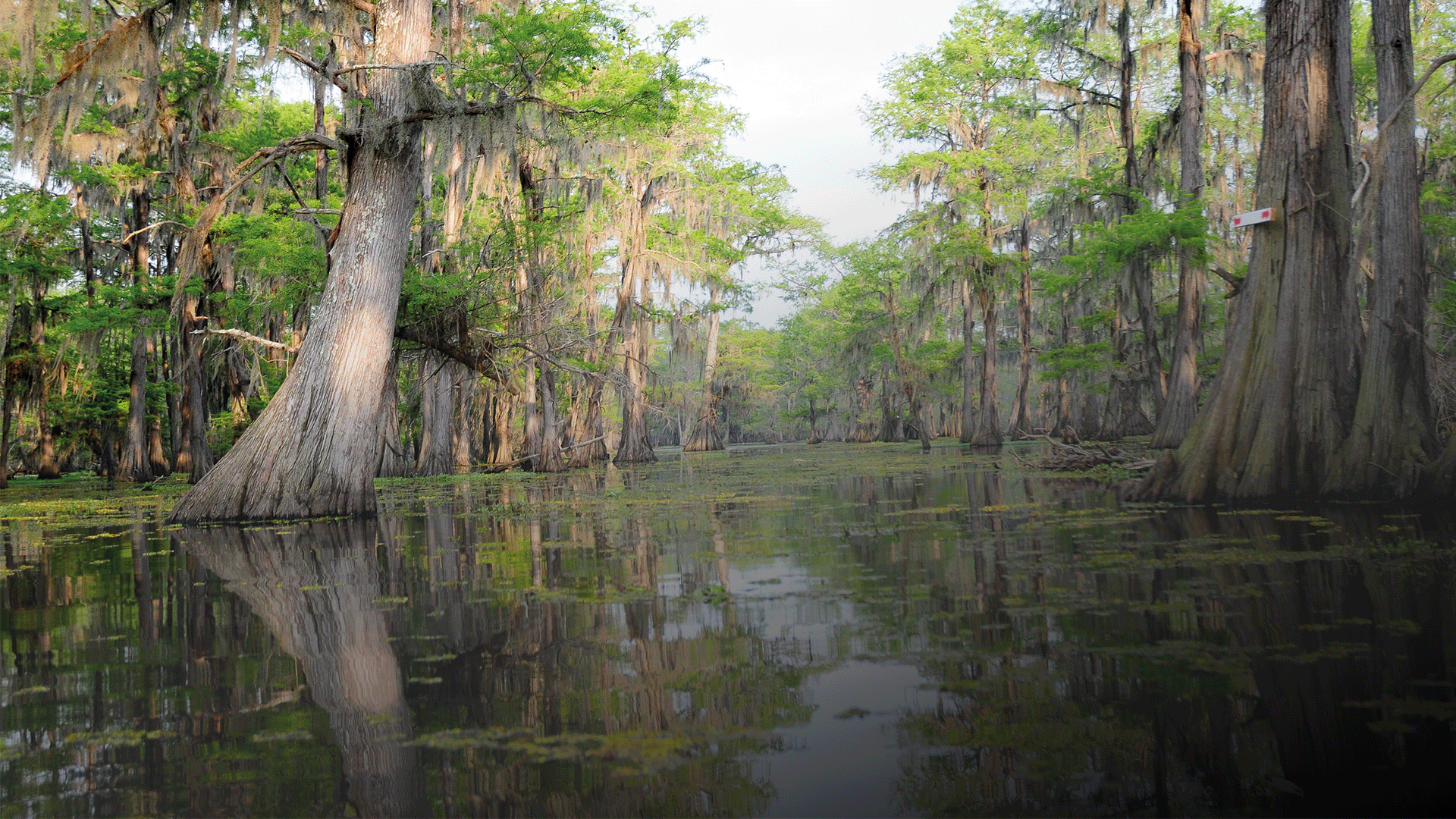
Terrarium Topics
Perfecting Terrarium Conditions
Maintaining optimal humidity levels is crucial for the health and vitality of your terrarium. Precisely regulating the humidity levels is essential to ensuring the flourishing of your plants and animals.
Terrarium Types
Reptiles and amphibians thrive in terrariums that simulate their natural biotope. Mimicking their natural habitat provides numerous benefits: it is essential for their health, well-being, and overall success in captivity. To give you a head start in finding and creating the perfect terrarium, Exo Terra described a range of habitat setups upon which you can base your animal's ideal terrarium setup:
Why use a natural terrarium setup?
Using a terrarium setup that closely mimics the natural biotope of the species you are keeping is crucial for several reasons. A biotope refers to the specific natural habitat or environment in which a particular species is naturally found. When creating a terrarium that resembles the natural biotope, you are essentially replicating the conditions under which the species has evolved and adapted to thrive.
Stay up on all things exo terra.
"*" indicates required fields
